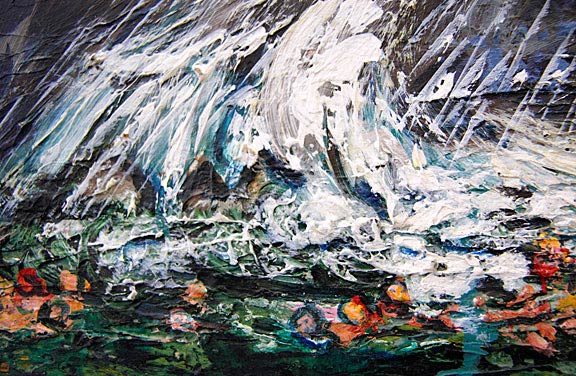Philip Stein at L.A.’s Gallery 1927
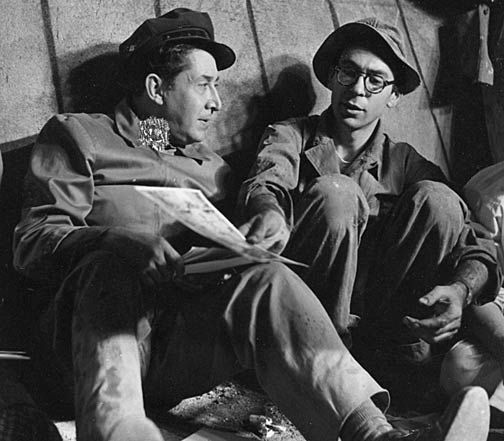
Blind Justice is a retrospective exhibit presenting the works of Estaño (a.k.a. Philip Stein, 1919-2009).
A figure in the American social realism school of the 1940s, Stein was also an assistant to the Mexican muralist painter, David Alfaro Siqueiros. In point of fact, Stein helped Siqueiros paint eleven of his most famous murals in Mexico City from 1948 to 1958.
When the two artists first met and collaborated in Mexico, Siqueiros had trouble pronouncing Stein’s name, and so gave him the nickname of Estaño (“Tin”).
I was fortunate to have befriended Philip Stein in 2003, and a year later I found myself building a website with him that served as an online portfolio of his works and accomplishments. Also in ’04, I conducted an interview with Stein where he told me, “When an artist is having a problem in seriously seeking a meaningful basis for their artistic endeavors, they could consider it a stroke of good luck if they should stumble on to the Mexican Mural Movement.”
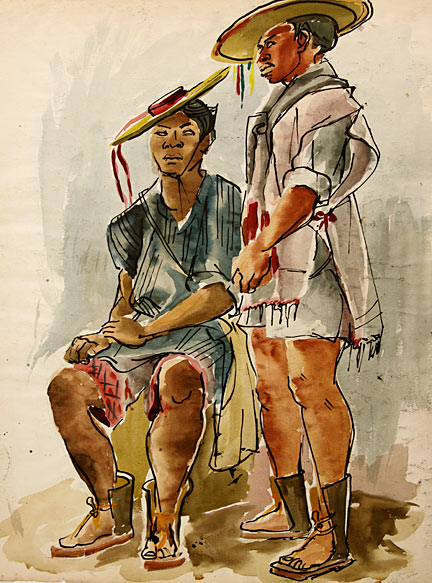
I continue to believe that Stein’s perceptive words regarding the Mexican Mural Movement are correct, not because I think the movement can, or should be, mechanically superimposed over our own time, but for the reason that the movement’s spirit is applicable to current conditions.
The 1930s-1940s school of Mexican social realism stood firm on the principles that art is not removed or separate from social reality, that art must confront the pressing issues of the day, and that art is not the plaything of the money bags, but the birthright and heritage of all.
The strong interest in the October 9, 2012 unveiling of América Tropical, the Olvera Street mural painted by Siqueiros on Los Angeles’ historic Olvera Street, should have also brought renewed attention to the works of Stein.
Regrettably that has not been the case, even in death recognition seems to evade him, but why? There are serious conclusions to be drawn. Aside from the political apathy and unabating anti-communism found in the U.S., those who have paid any attention to Siqueiros and the Mexican school, have done so only through the prism of identity politics… they cannot see this art outside of the “Mexicanidad” or Chicano art context. Hence, Stein, a White American born in Newark, New Jersey, simply does not fit the narrative.
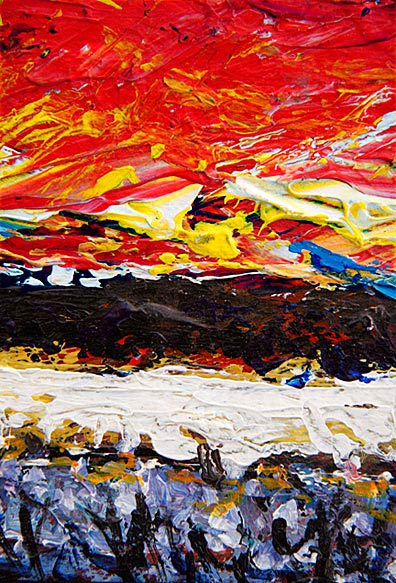
The 1930s Mexican school of social realism was no different than the German or American schools of social realism that existed at the time. Though rooted in distinct cultural and national experiences, all of the artists associated with social realism possessed an egalitarian vision and internationalist spirit. Despite the fact that Stein was American, he played a notable role in Mexican Muralism, he certainly gave his all to it.
To put what I am saying in context, it was the French artist Jean Charlot that painted The Massacre in the Main Temple, the very first wall painting of the Mexican Mural Movement. Charlot’s mural, painted in Mexico City’s Escuela Preparatoria (now the Antiguo Colegio de San Ildefonso) was completed in 1923.
The mural depicted Spanish Conquistadors slaughtering hundreds of Aztecs who had gathered in their capital of Tenochtitlán (now modern Mexico City) for a religious ritual in 1520.
Charlot’s team of assistants taught Diego Rivera’s assistants how to plaster a wall in preparation for Rivera creating his first mural, also at the Escuela Preparatoria. Charlot of course went on to play a large role in the development of Mexican art, but my point is that history has noted his contributions, it is time that Philip Stein be similarly acknowledged.
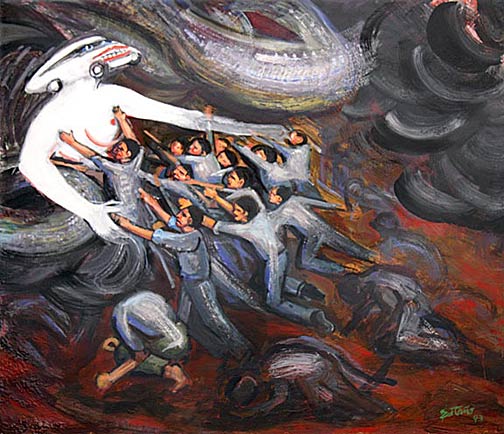
People in or near Los Angeles have a unique opportunity to expand their understanding of the life and times of Philip Stein, Siqueiros, and the school of social realism, by attending the Blind Justice exhibit at L.A.’s Gallery 1927. In actuality the show is a duplication of A Civil Defense: Paintings of Estaño, an exhibit of Stein’s paintings and drawings held in 2012 at the Take My Picture gallery in downtown L.A. Both exhibits were made possible by Estaño’s daughter, Anne Stein, who has quite admirably worked tirelessly at preserving her father’s legacy.
While the so-called “art press” and the rest of the media in the U.S. effectively paid no attention to A Civil Defense, Spain’s International News Agency, EFE, interviewed me in Sept. of 2012 as part of their coverage of the exhibit. The largest Spanish language newswire service in Spain, Latin America, and the U.S., EFE is also the 4th largest worldwide newswire service. It operates like the Associated Press, offering reports that news sources pick up and publish. Reporter Fernando Mexía of EFE put questions to me concerning the life and works of Stein, details that appeared in an EFE report published by Spain’s ABC.es, Argentina’s Yahoo! Noticias, Mexico’s Siempre!, Ecuador’s El Comercio, and dozens of other Spanish language publications worldwide.
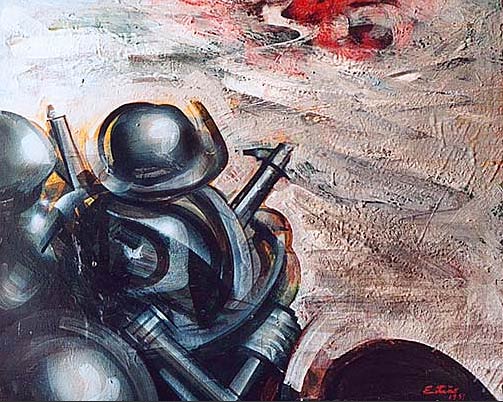
Based on the EFE newswire report, MSN Latinoamérica featured a Spanish language video titled Philip Stein, el desconocido asistente de Siqueiros (Philip Stein, the unknown assistant of Siqueiros). The well produced short video gives a glimpse of the Civil Defense exhibit, along with some splendid close-up shots of Stein’s paintings and drawings. If you missed the 2012 exhibit, be sure and see Stein’s paintings in the Blind Justice show at Gallery 1927. It is not known when, or if, the evocative and intelligent works of Estaño will be seen again soon.
Blind Justice runs until November 10, 2013 at Gallery 1927 at the Fine Arts Building. 811 W. 7th Street. Los Angeles, CA 90017. (Ph: 805-217-2186).
